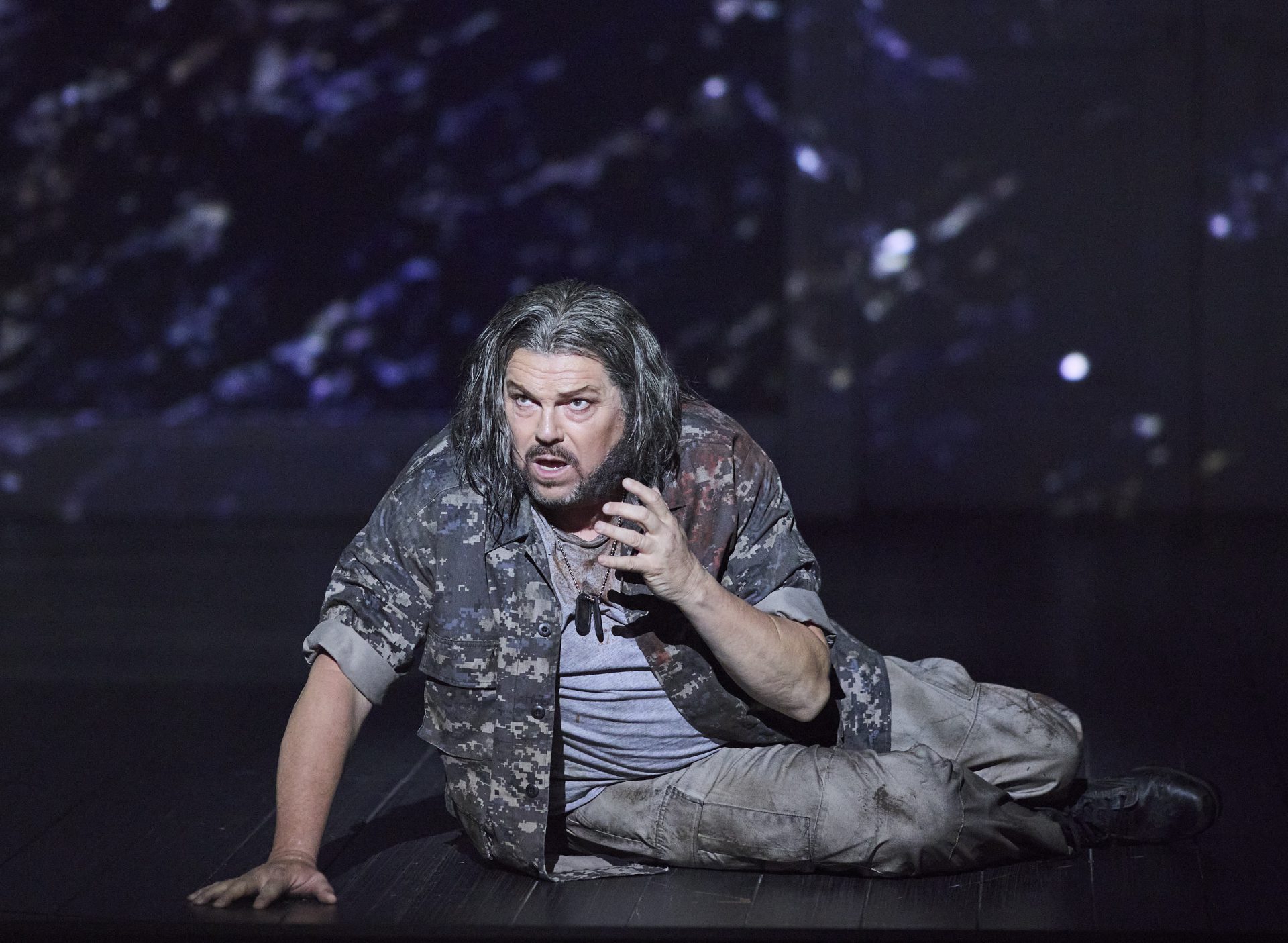The scene is Crete. Coastal Crete. Visions of the waves crashing upon the shore, and a decidedly stately overture, make for a delightful mise en scene.
Celeste Lazarenko emerges as Ilia, in a palatial setting with all the trappings of the ancien régime. Her opening recitative introduces the central themes of this opera – filial tension, the fates conspiring against man, and a starstruck love that bridges two houses.
Lazarenko settles well into character a few minutes in. The way she rendered the words ‘oh dolce morte’ was breathtaking – it traversed the whole dynamic range, from the faintest to the loudest, in the subtlest way possible.
Her lover Idamante, son of the Cretan King Idomeneo, soon follows. Caitlin Hulcup plays the role. That these roles are often performed by a soprano or castrato reflects the Classical trope of the ‘child king’. Hulcup’s voice was clear and effective, and her projection was delightfully natural; there was none of the screeching that tends to follow from sopranos’ desire to wow when ascending into the upper register.
When a storm ensues, there is a dramatic interplay between strings and winds, which was performed to great effect. Michael Schade stood out as Idomeneo in a moment of great pathos – when father meets son in a way that is unbeknownst to both of them. His voice is reminiscent of Werner Hollweg’s. John Longmuir enters the scene as Arbace, who counsels Idomeneo. His voice is animated and versatile and well suited to the classical recitative style. The second Act closes with a poignant moment when the chorus, tormented by Neptune’s creation, asks ‘Who is guilty’, as Idomeneo submits himself to the crowds sans robes and regalia.
This opera features no great arias. There are few florid showstoppers. An exception is a few impassioned moments for Emma Pearson as Elettra, including in the ‘Tutte nel cor vi sento’, which anticipates the rage into which Elettra descends at the end of the opera. In that rage, she traverses the highest and lowest parts of her vocal range, and descends rapidly not so much singing as laughing. The cacophony that ensues as she descends ‘into the abyss’ anticipates Strauss’ opera bearing her name.
But there is much recitative. Among it all emerges Kanen Breen as the High Priest, who many remember as Platée from Pinchgut Opera a few years ago, which shows the versatility of his voice. His articulation was good and his projection also natural.
Photo credit Keith Saunders.
